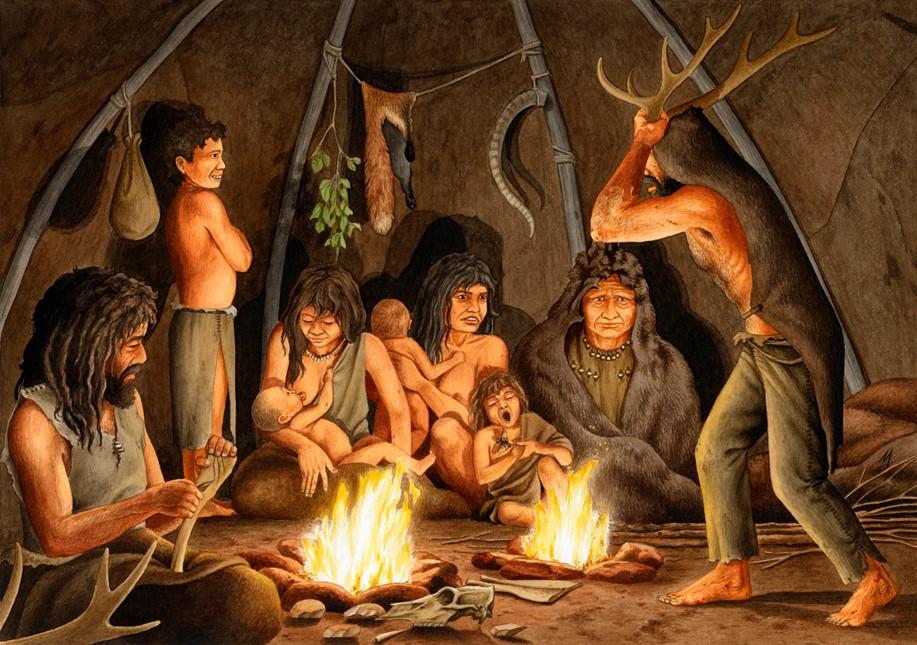A groundbreaking study published in Nature has unveiled a remarkable collection of whale bone tools dating back to the Late Paleolithic era along the Bay of Biscay. These ancient artifacts not only shed new light on the resourcefulness and ingenuity of early human communities but also provide an unprecedented glimpse into the marine ecosystem of the time. By examining these tools, researchers are piecing together the intricate relationship between humans and whales tens of thousands of years ago, revealing how prehistoric peoples adapted to and interacted with their coastal environment.
Late Paleolithic Whale Bone Tools Uncover Human Innovation in the Bay of Biscay
Recent discoveries along the Bay of Biscay coastline have brought to light remarkable Late Paleolithic tools crafted from whale bones, shedding unprecedented insight into the resourcefulness of prehistoric humans. These artifacts demonstrate not only advanced craftsmanship but also a profound understanding of whale ecology that early humans exploited. The tools display intricate shaping techniques, suggesting a deliberate selection of specific bone types to maximize durability and function. This interplay between human ingenuity and marine life underscores a symbiotic relationship that was pivotal for survival during this era.
Key features of the whale bone tools include:
- Polished surfaces indicating extended use and maintenance
- Precision-cut edges suited for hunting and processing marine animals
- Variations in tool size correlating with distinct tasks
| Tool Type | Bone Used | Primary Function |
|---|---|---|
| Harpoon Tip | Whale mandible | Hunting large fish |
| Scraper | Rib bone | Processing hides |
| Engraving Tool | Vertebrae fragment | Crafting and decoration |
Insights into Ancient Whale Ecology Through Archaeological Discoveries
Recent archaeological excavations along the Bay of Biscay coastline have unearthed remarkably preserved whale bone tools dating back to the Late Paleolithic period. These findings not only underscore the sophisticated craftsmanship of prehistoric coastal communities but also provide a rare window into the dual ecology of early humans and whales. The tools, intricately carved and polished, suggest a deep understanding of whale anatomy, revealing how ancient populations optimized available marine resources for survival. Moreover, the spatial distribution of these artifacts aligns closely with migratory patterns of ancient whale species, indicating a dynamic interplay between human activity and cetacean ecology in this region.
Analysis of the tool assemblage highlights several key insights:
- Material selection: Preference for dense, resilient bones from large whales, reflecting targeted hunting or scavenging strategies.
- Tool functionality: Implements shaped for diverse uses, ranging from fishing and butchering to symbolic or ritualistic purposes.
- Ecological implications: Evidence of seasonal human occupation tied to whale migrations, underscoring the importance of marine fauna in prehistoric diets and cultures.
| Tool Type | Bone Source | Primary Use | Estimated Age (years BP) |
|---|---|---|---|
| Harpoon point | Baleen whale mandible | Hunting large fish and whales | 14,500 |
| Scraper | Rib bone | Hide processing | 14,200 |
| Axe-like tool | Vertebra | Woodworking and butchery | 14,300 |
Recommendations for Preserving Coastal Heritage and Enhancing Future Research
To safeguard the invaluable Late Paleolithic artifacts and the ecological narratives they unveil, immediate attention must be directed toward proactive coastal heritage management. Prioritizing areas with high archaeological potential through community-based conservation programs can foster local stewardship and raise public awareness. In addition, integrating advanced non-invasive survey technologies-such as LiDAR and underwater photogrammetry-will enable researchers to map and monitor delicate sites without disturbing the fragile remains. Collaborations between government bodies, academic institutions, and indigenous groups are essential to crafting policies that both protect and celebrate this coastal legacy.
Enhancing future research demands a multidisciplinary approach anchored in comprehensive data sharing and methodological innovation. The following strategies can augment our understanding and preservation efforts:
- Standardizing digital repositories for archaeological finds to facilitate cross-regional comparisons.
- Expanding paleoecological models to correlate whale bone tools with environmental shifts and human adaptations.
- Developing educational platforms that connect past coastal ecologies with contemporary conservation challenges.
| Preservation Strategy | Key Benefits |
|---|---|
| Community Engagement | Enhanced site protection & local heritage pride |
| Advanced Remote Sensing | Non-invasive site documentation |
| Interdisciplinary Collaboration | Broader ecological and cultural insights |
Concluding Remarks
The discovery of Late Paleolithic whale bone tools along the Bay of Biscay not only sheds new light on the innovative resourcefulness of ancient humans but also offers a rare glimpse into the intertwined lives of humans and whales during this period. As researchers continue to unravel the ecological dynamics captured in these remarkable artifacts, the study opens fresh avenues for understanding how prehistoric communities adapted to and impacted their coastal environments. This breakthrough underscores the value of interdisciplinary approaches in piecing together the complex history of human and animal interactions along Europe’s Atlantic shores.
